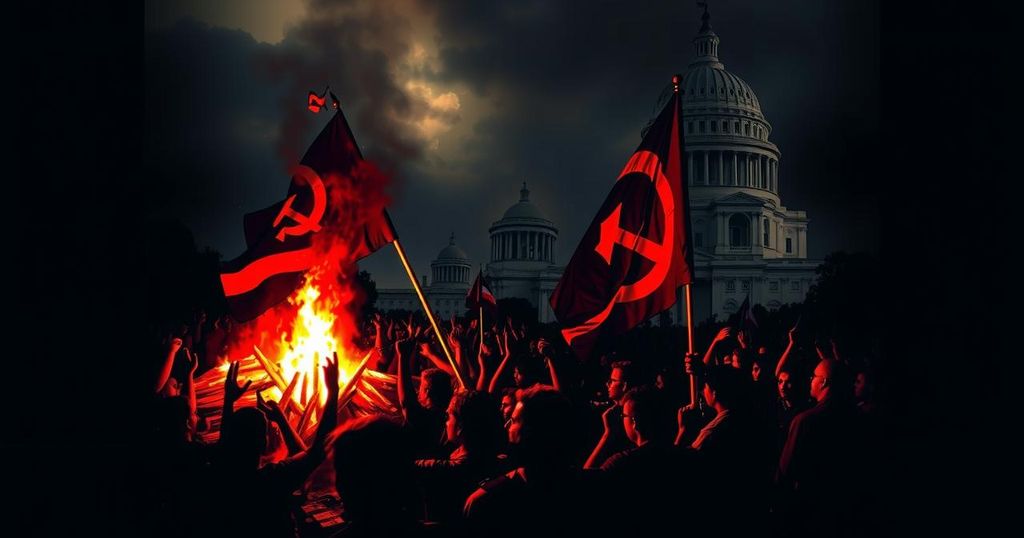The Complex Legacy of Soviet Influence and Cuban Socialism Under Fidel Castro

Cuba, under Fidel Castro’s regime, navigated a tumultuous journey toward socialism marked by internal divisions, reliance on Soviet support, and contentious U.S. relations. The Cuban Missile Crisis exemplified the extremities of the Cold War, and subsequent economic and political strategies led to varying degrees of success and isolation. Emigration surged due to economic hardships, as Cuba attempted to assert influence regionally while contending with a persistent U.S. trade embargo and sanctions.
Cuba’s transition towards socialism created significant division within its leadership and across the populace, leading to the emigration of hundreds of thousands, particularly skilled workers and affluent individuals, to nations such as the United States, primarily Miami, and Spain. The regime of Fidel Castro heavily relied on Soviet economic and military support during its formative years, which heightened tensions with the United States, notably during the Cuban Missile Crisis in October 1962. This pivotal event brought the world perilously close to nuclear conflict as the U.S. imposed a naval blockade in response to the presence of Soviet nuclear missiles in Cuba. Cuba faced enduring challenges, including severe shortages of essential goods. A second agrarian reform in the mid-1960s stifled the diversification of the economy, which remained predominantly reliant on sugarcane. Concurrently, Cuba sought to export its revolutionary ideals, evidenced by a 1964 meeting of Latin American communists held in Havana and support for insurgencies in the region, such as the Dominican Civil War in 1965. Ernesto “Che” Guevara’s efforts to incite revolutions abroad ultimately resulted in his death in Bolivia in 1967, further isolating Cuba in Latin America and the Caribbean. In the late 1960s, the Cuban government intensified its campaign against private ownership, nationalizing numerous small enterprises and integrating military officials into high government, industry, and Communist Party positions. An attempt to improve production through moral incentives was unsuccessful, prompting a return to a more traditional Soviet-style economic planning approach. The political structure saw restructuring in 1976, with Castro consolidating his power as president of both the Council of Ministers and the Council of State. The 1970s marked a slight improvement in living conditions, as some supply chain issues were resolved, and Cuba began to cultivate a leadership role amongst developing and nonaligned nations. During this period, Cuba offered various forms of assistance to countries in Africa and Latin America but experienced diminished influence following its backing of the Soviet invasion of Afghanistan in 1979. The United States’ objections to Soviet troops stationed in Cuba further strained relations, which were aggravated by U.S. military actions in Grenada in 1983. Despite some degree of improved relations with the United States since the revolution, the trade embargo imposed in the early 1960s effectively endures. Instances of U.S. military actions, investigations into political prisoner conditions, and consistent anti-Cuban propaganda broadcasts have maintained a state of tension. Since the early 1980s, emigration from Cuba to the United States has been a prominent issue, notably exemplified by the Mariel boatlift in 1980, where approximately 125,000 Cubans sought refuge in the U.S. An agreement in 1987 allowed for 20,000 legal annual emigrants from Cuba. Soviet assistance was paramount to Cuba, encompassing loans, petroleum, military supplies, and technical expertise, comprising a considerable portion of Cuba’s national budget. However, with the liberalization of Soviet policies in the late 1980s, Cuban-Soviet relations began to deteriorate, while Cuba steadfastly maintained its existing socialist policies.
The article discusses Cuba’s political and economic evolution under Fidel Castro’s leadership, highlighting the interplay of internal divisions, economic dependency on the Soviet Union, and the impact of international relations. Castro’s regime was significantly shaped by its socialist orientation, which prompted mass emigration and conflict with the United States, particularly during the Cold War. The narrative chronicles Cuba’s challenges, including economic reforms, reliance on Soviet aid, involvement in regional conflicts, and efforts to establish a leadership role among nonaligned nations. This context is crucial for understanding Cuba’s complex history during and after the revolution in the mid-20th century.
In summary, Cuba’s path post-revolution was characterized by an arduous struggle between socialist ideals and economic realities, compounded by the influence of external powers, particularly the Soviet Union. While the state successfully fostered regional relationships and alleviated some internal shortages in the 1970s, the overarching dependency on foreign support and ongoing tensions with the United States have deeply impacted Cuba’s socio-economic landscape. The legacy of the Cuban revolution continues to shape its political identity and international standing, demonstrating the enduring complexity of Castro’s policies and their repercussions.
Original Source: www.britannica.com







